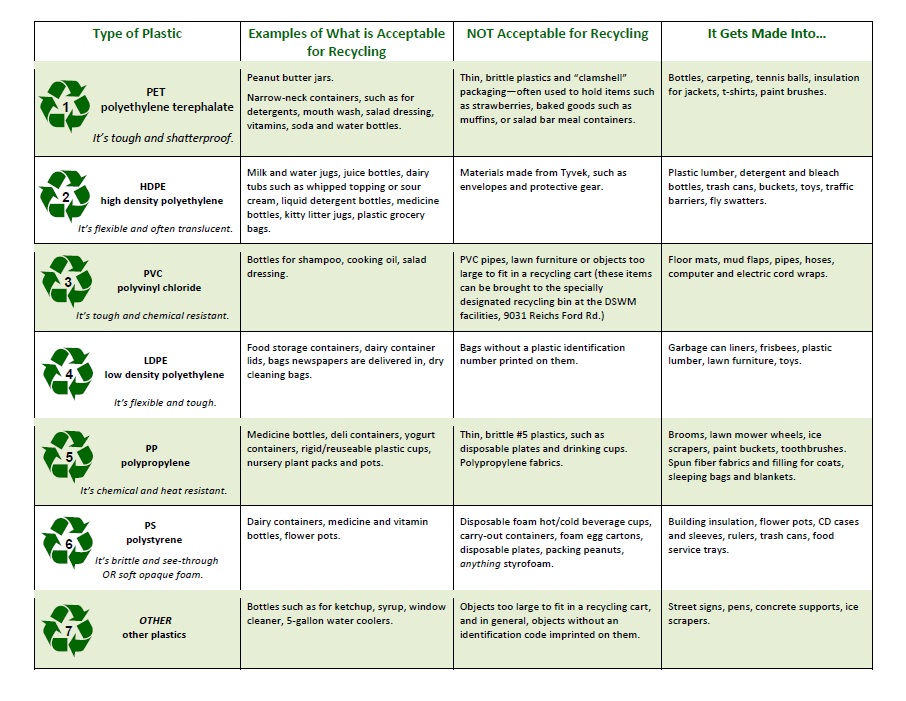

Since recyclers target post-consumer plastics, the recycling symbols are The products shown are just examples, so when sorting recyclables always check the recycling number imprinted on the bottom of the plastic item.Ĭode was designed by The Society of the Plastics Industry (SPI) in 1988.

Note that soda bottles and caps should be separated before recycling, as usually bottles are number 1 and caps are number 5, and different types of plastic do not recycle together. Plastics", including non-petroleum based. Though they have the recycling #7, this only means "other They are made of any combination of 1-6 or another, less commonly used plastic.īiodegradable plastics, like cups made of corn, are NOT recyclable. Note that most cities accept plastics #6 for recycling, but NOT styrofoam, peanuts, etc. Plastic cups, disposable cutlery and cups (clear and colored), coffee cups, packing peanuts, Styrofoam insulation. Tupperware, yogurt tubs, (orange) medicine containers, and plastic caps of soda bottles. Note that most cities accept plastics #4 for recycling, but NOT grocery bags (these can stuck in the sorting machines). Wrapping films, grocery bags, and sandwich bags. Number 4 - LDPE - Low-density Polyethylene: Pipes, shower curtains, clear medical tubing, vinyl dashboards and seat covers. Number 2 - HDPE - High-density Polyethylene:Ĭontainers for: laundry/dish detergent, milk, shampoo, conditioner, also various toys, and grocery bags. Soda bottles, water bottles, cooking oil bottles, and medicine containers. Number 1- PETE - Poly(ethylene terephthalate):
RECYCLE NUMBERS FULL
Below is a list of the numbers, full names of the plastics they refer to, and some examples of common containers made of that product. The most widely accepted plastics for recycling are number 1 and 2, also most of plastic containers are type 1 and 2. Sometimes below the numbers you also find the abbreviations for the plastic type (PETE, HDPE, etc.).
RECYCLE NUMBERS CODE
The recycling code constitutes of the numbers 1 through 7. Note that sometimes other numbers are found on the bottom of plastic containers, but only numbers inside the recycling symbol are valid for recycling purpose. The recycling numbers are a uniform way of classifying the different types of plastic and it aids recyclers in the sorting process. For this reason they need to be separated. Different molecules do not mix when plastics are recycled, it is like trying to recycle paper and glass together. Each plastic is composed of a different molecule or set of molecules.

This number is a reference to what type of plastic the container is made of. At the bottom of most plastic containers you can find a small number inside the three arrow triangle recycling symbol.


 0 kommentar(er)
0 kommentar(er)
